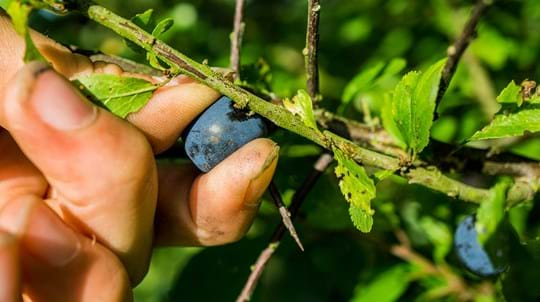
Blog
When to pick sloes and how to make sloe gin
Helen Keating • 15 Sep 2020

Content manager, botanist and tree lover
Our lives have been so closely linked with trees since prehistoric times, they've been the subjects of legends, folklore and mythology.
Here are nine British trees with their own magical associations and stories.
In Scandinavian mythology the ash tree was known as yggdrasil, the ‘Tree of the World’ as the giant ash tree that linked and sheltered all the worlds. It was also known as 'The Tree of Rebirth and Healing' and to come into contact with it meant regeneration or rebirth.
In Britain, ash was also regarded as a healing tree. In Hampshire, magic rituals would take place where a naked child was passed through the split trunk of an ash tree as a cure for broken or weak limbs. It was said that if the parts stayed together the child was cured, but if the gap remained, the ritual would not be effective.
Blackthorn has long been considered a magical tree. In Celtic mythology, it was considered to be a home to fairies.
It has been referred to as a witch’s tree and anyone carrying a walking stick made from blackthorn wood was suspected of being a witch. A blackthorn staff was thought to be effective for warding off evil spirits.
The folklore surrounding elder is wide and often conflicting. It was thought that if you burned elder wood you would see the devil but if you planted one by your house it would keep the devil at bay. Apparently, it could charm away warts and vermin.
In Denmark the tree was associated with magic. A dryad called the Elder Tree Mother was supposed to live in its branches. If you wanted to cut the tree to make furniture from its wood, the Elder Tree Mother must be asked permission first. If she wasn't, you ran the risk that she'd follow and haunt you.
Elder's habit of growing on wasteland, rubbish tips, and cemeteries has earned it both respect and dislike. In the Middle Ages, it was claimed to be the tree on which Judas hung himself.
Oak has a long history of folklore throughout Europe and was sacred to many people, including the ancient Greeks, the Norse and the Celts.
Oak's association with the gods of thunder may have come from the phenomenon that oaks are often split by lightning being the tallest trees standing in the landscape.
More recently oak was the sacred wood burnt by the druids for their mid-summer sacrifice. In fact the word 'druid' means 'oak man'.
Folklore told that the following saying about its leaves emerging would predict the weather for the summer.
If the oak before the ash,
Then we’ll only have a splash.
If the ash before the oak,
Then we’ll surely have a soak.
In modern history, tradition has it that Charles II hid in an oak tree at Boscobel when pursued by the Roundheads. Since then, children wear oak leaves on 29 May to commemorate Royal Oak Day (now known as Oak Apple Day).
Hawthorn was a powerful supernatural force for good or evil and has been associated with sacrifice and protection.
It's the only British plant to be named after the month in which it flowers. The appearance of its blossom was the herald of the end of winter and the beginning of summer and the saying ‘Ne’er cast a clout till May is out’ almost certainly refers to the opening of the flowers, not the end of the month.
The hawthorn was thought to be the ancestor of the maypole and was the source of May Day garlands and the May Queen was often crowned with May blossom. The rhyme ‘here we go gathering nuts in May’ referred to the collection of knots (not in fact ‘nuts’) of may blossom.
Superstitions about the flowers, especially about the terrible consequences of bringing them indoors, are widespread.
Rowan has many associations with magic and witches. One of its English names is witchwood and its old Celtic name is fid na ndruad which means wizard's tree.
In Ireland it was planted near houses to protect against spirits, especially of the dead. In Wales rowan trees were often planted in churchyards. In Scotland there was a strong taboo against cutting down a rowan.
The wood was seen as the most protective part and was used for stirring milk (to prevent it curdling), as a pocket charm against rheumatism, and made into divining rods. The protective power is thought to come from the bright red berries, as red was thought to be the best colour for fighting evil.
There was an ancient practice of hanging sprigs of rowan above doors and stables to keep away evil spirits. An old German folk tale says that if you carry a leaf or a bit of wood from the rowan, it will protect you from harm.
Silver birch was known in druid mythology as the ‘Lady of the woods’.
Silver birch is important spiritually in many religions both historically and today.
It is known by the druids as the Goddess Tree and the Lady of the Woods and is associated with light, new beginnings, love and fertility. It was a tree of enchantment with the power to protect against evil spirits and the evil eye.
In medieval Britain, a bundle of birch twigs was carried by the local magistrate on his way to court as a symbol of his authority and as a means of correction. The use of the birch as a punishment probably originates in the need to drive out evil spirits.
All willows were seen as trees of celebration in biblical times but this has changed over time and now willows are often associated with sadness and mourning.
Classical poems often refer to willow in this way and it is repeated in art with Ophelia drowning herself near a willow. It is suggested that the bitter taste of willow gave it this association. In English folklore, a willow tree is believed to be quite sinister, capable of uprooting itself and stalking travellers.
In northern areas, willow branches are used instead of palm branches to celebrate Palm Sunday.
There has been a long association of yew trees in churchyards and there are at least 500 churchyards in England that have yew trees that are older than the building itself.
It is not known why there is this link but there are many theories, from yews being planted over the graves of plague victims to protect and purify the dead, to the more mundane in that yews could be planted in churchyards as it was one of the only places that cattle did not have access and therefore would not be poisoned by eating the leaves.
Yew trees are taken as symbols of immortality in many traditions but are also seen as omens of doom. For many centuries it was the custom for yew branches to be carried on Palm Sunday and at funerals. In Ireland, it was said that yew was ‘the coffin of the vine’ as wine barrels were made of yew staves.
Explore over 70 species found in the UK, from all the native trees to the common non-natives.
See our A-Z list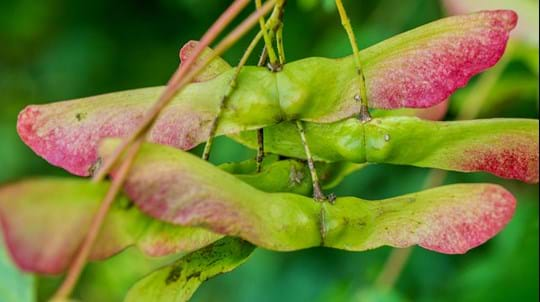
Blog
Helen Keating • 13 Jul 2020
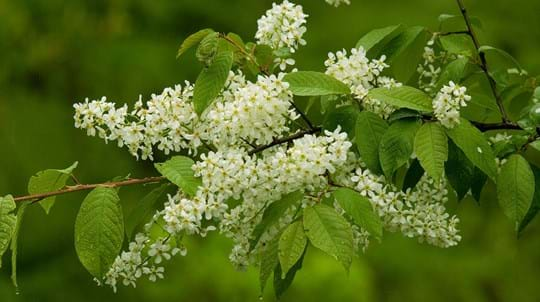
Blog
Helen Keating • 08 Nov 2021
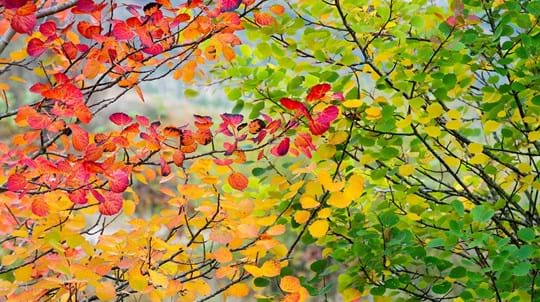
Blog
Helen Keating • 19 Oct 2020
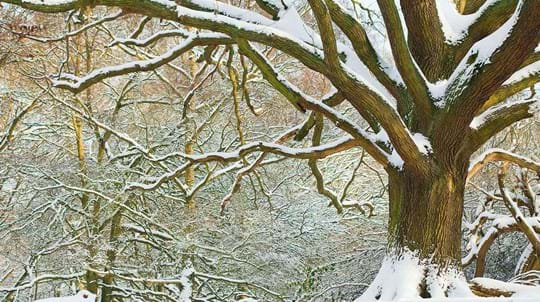
Blog
Helen Keating • 17 Dec 2020